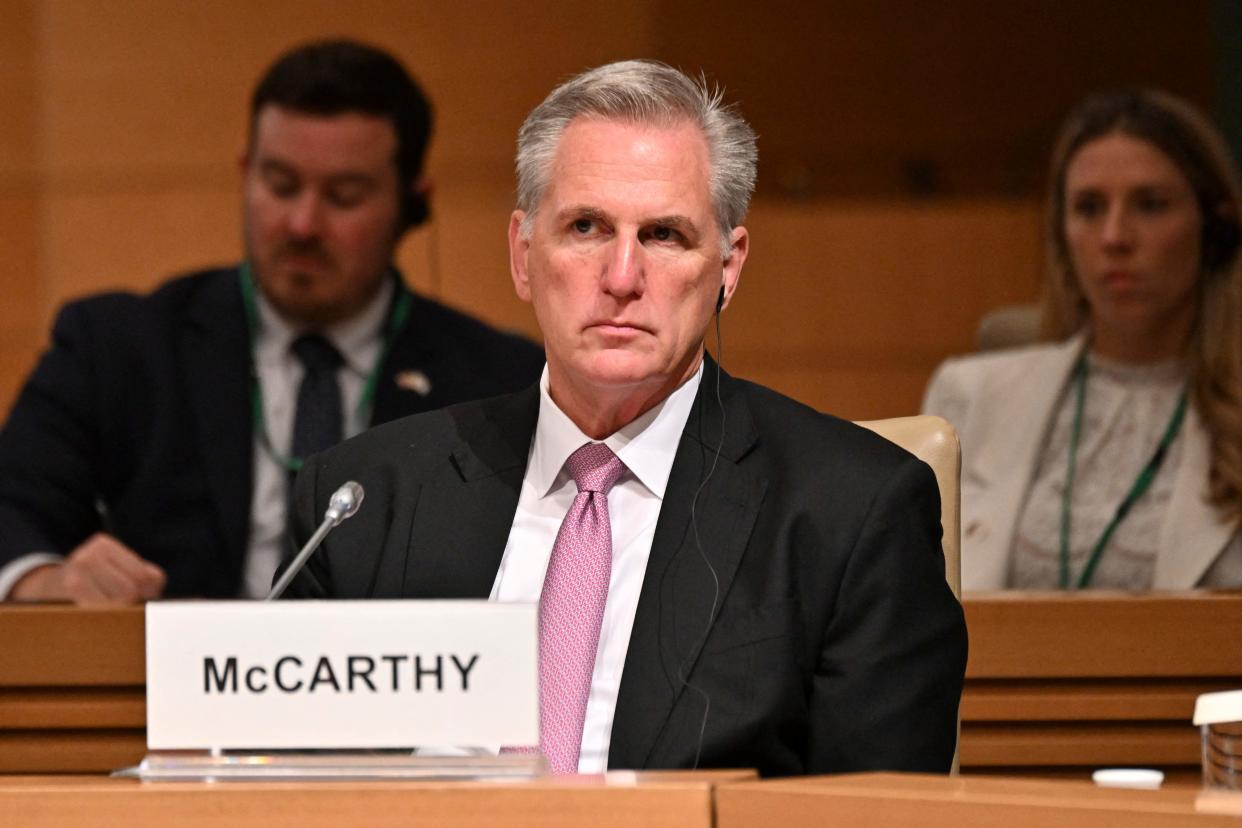There might be a shutdown of the government in just over three weeks. The history offers lessons for how yet another lapse in government funding could play out in the markets as speculators simulate probable effects.
Four of the six recent extended US government shutdowns that lasted at least a few trading days, according to a Yahoo Finance analysis, concluded with rising stock prices.
But more frequently than not, company developments or macroeconomic reasons unconnected to the shutdowns themselves served as the catalysts for those pricing shifts. The trajectory of the markets is often unaffected by this specific type of DC malfunction.
The consequences of a closure are, however, more obvious when it comes to larger economic ramifications. For each week that a shutdown lasts, experts estimate that the drop in government spending will have a negative impact on economic growth of about 0.15 percentage points.
Government spending is temporarily curtailed during shutdowns, with the exception of sizable portions of “mandatory” programmes like Social Security and “essential” services. The majority of the lowered spending is made up later on when the government resumes operating at full capacity.
A historically unprecedented shutdown that starts on October 1 and lasts into the fourth quarter, according to recent estimates from Moody’s Analytics senior economist Mark Zandi, would reduce fourth quarter growth by 1.2 percentage points.
After totaling up all of the stoppages, which totaled 20 since 1976, Adviser Investments recently discovered that the market had been nearly unchanged. It just gave back 0.04%.
Individual shutdowns have not, however, resulted in a loss for traders.
From December 22, 2018 to January 25, 2019, there was the longest government shutdown in American history due to a disagreement between the then-President Trump and lawmakers over money for a border wall.
Stock prices started off with a steep 4% decline, but after the 35-day closure, investors were thrilled since the S&P 500 rose by approximately 8% overall starting the day before the shutdown started.
Overall, 2019 turned out to be one of the finest stock market years in recent memory, but the gains were frequently credited to things like solid corporate earnings and reducing trade tensions with China. There was no mention of the shutdown in any of the 2019 stock summaries.
In 1990, there were losses for investors due to a government shutdown, but there were also gains in 1995 and 2013. But in each instance, the profits shown during the shutdowns coincided with the year’s total profits.
2018 was one recent instance of a shutdown defying the market. Stocks increased after a temporary three-day shutdown in January of that poor year overall.
However, the market’s bottom fell out by year’s end. In 2018, traders experienced steep falls, particularly in December. That came about as a result of a variety of problems, including worries about a slowing global economy and an impending debt ceiling battle.
Debate over the entire government’s borrowing ability has historically made debt ceiling battles much more important for the markets. Compared to what many had anticipated, the debt ceiling crisis in 2011 caused the markets to swing considerably, with less of an effect on stocks in the end.
As the House of Representatives reconvenes this coming week, negotiations over the shutdown are expected to get up in earnest. The concurrent sessions of both chambers of Congress will take place for the first time since July.
If the likelihood of a historically long shutdown starts to rise is a question that many economists are sure to be asking in the coming days. A closure that lasted the all of 2023’s fourth quarter, which is still considered to be improbable, would be by far the longest shutdown in history and might have more profound consequences on the stock market and the economy than many are now anticipating.
However, given the heightened partisanship in Congress and the possibility that House Speaker Kevin McCarthy’s position could be in jeopardy if he doesn’t bring up other matters, a protracted shutdown is a possibility.
Rep. Marjorie Taylor Greene’s proposal for a funding agreement with the government and an investigation into President Biden’s impeachment is the most contentious one.
Other measures involving new border security requirements and a revamp of the Justice Department’s budget may also be on the table in the multi-stage negotiations that will continue for the rest of the year.
Both parties are currently entrenched, with Transportation Secretary Pete Buttigieg recently warning that a shutdown “would be a mess for the US economy.”

